|
|
|
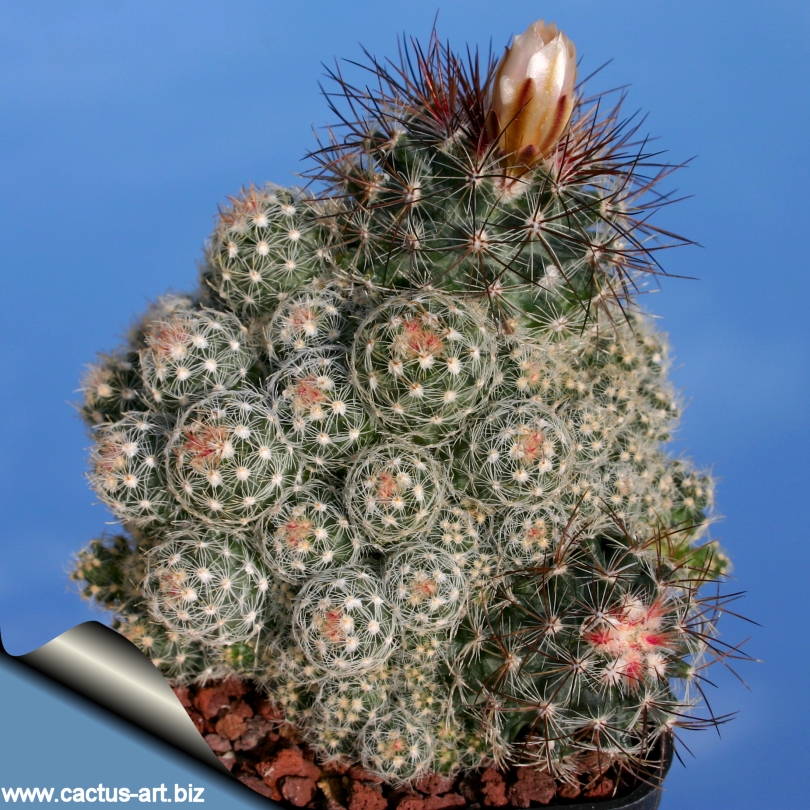
Pediocactus simpsonii SB586 (forma caespitosa) Wayne County, Utah, USA
Freely
offsetting selection - soon forms huge
clumps.
|
|
Description: The standard
Pediocactus
simpsoni is generally singular but occasionally forms small
clusters, while the so called "caespitosa" form is a clone
obtained in cultivation characterized by an enhanced and almost
monstrous production of basal shoots. This plant forms readily
large mound of stems.
Stems: Depressed-ovoid to ovoid or globular stems that are
2.5-15(-25) tall × 2.5-15 cm in diameter. Freely ofsetting from the
base.
Areoles: Circular to oval, villous.
Tubercles: Spirally arranged, conicalabout 5 to 15 mm long.
Spines: Located on the tips of the tubercles smooth, relatively
hard, distinguishable as radial and central.
Radials: 15 to 35 widely spreading, white, slender, which are
3-13 mm long.
Centrals: 4 to 11 widely spreading about 1 to 2 cm long reddish
brown (rarely black) with basal half cream or yellow, rigid, straight or
slightly curved. Sometimes the spines almost obscure the surface of the
plant.
Flowers: 2 to 2,5 cm, bell shaped with scales and outer tepals
minutely toothed and laciniate or entire and often undulate; ranging
from magenta, pink, straw-yellow, to whitish outer tepals with greenish
brown midstripes.. The buds and flowers originate in a small circle at
the apex of the plant.
Blooming season: Open from mid April on into May. The flowers
usually remain closed on cloudy days.
Fruits: Almost spherical to short cylindric 6-11 × 5-10 mm ,
green at first, turning tan, drying reddish brown and splitting along
the side when mature.
Seeds: Gray to black, 2-3 × 1.5-2 mm, papillate but not rugose.
|
|
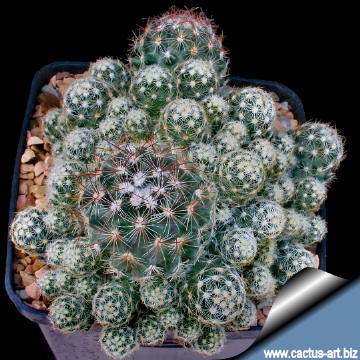 |

|
|
.
|
|
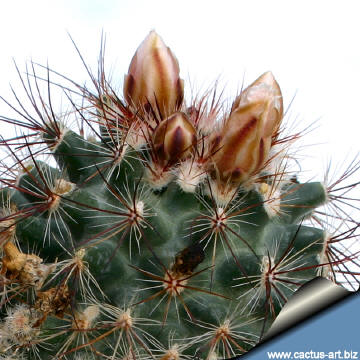 |
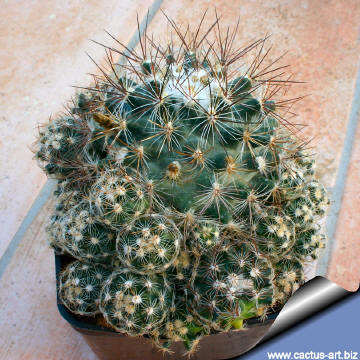
|
|
Advertising
|
|
|
|
|
Family:
Cactaceae (Cactus
Family)
Scientific name:
Pediocactus simpsonii
(Engelm.) Britt. & Rose
Published in N. L. Britton and A. Brown, Ill. Fl. N.
U.S. ed. 2. 2: 570. 1913 (as simpsoni).
"caespitosa" (Clumping form)
Origin:
Garden origin (Nursery
produced cultivar).
Conservation status: Listed in
CITES appendix 2.
Common Names include: Mountain ball cactus,
Simpson’s footcactus, Simpon’s hedgehog cactus
Etymology: Named in honour to the army engineer James H. Simpson
who led an expedition in Colorado
|
|
|
|
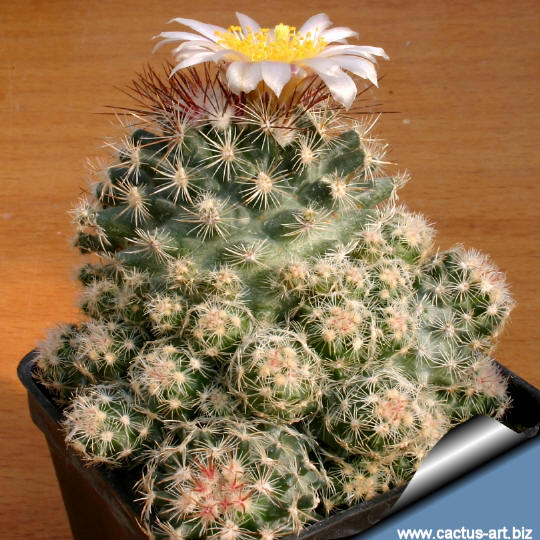
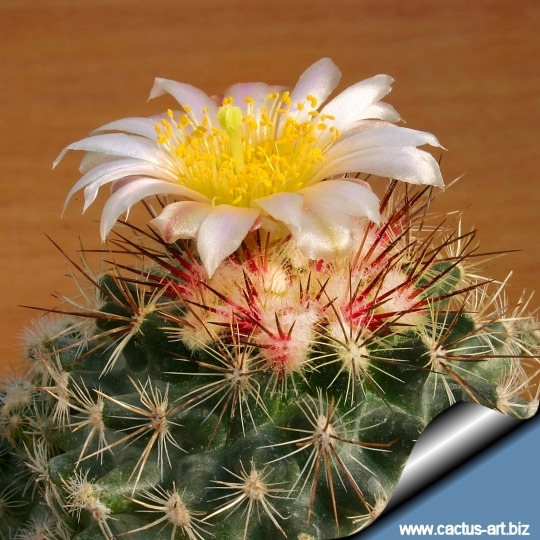
New spines in spring are bright red
Cultivation:
Rot prone and not the easiest cactusv to grow on it's own roots in
cultivation it need a well
drained, porous soil is preferred. Partial shading, especially during
the hottest part of the summer, is helpful. Water should be provided
in late
winter, early spring (the main
growing season), and also in
Autumn, when
flower buds are produced and it starts growing again.
Do not l water during the winter seasons.
Problems with this plants are most likely to result from improper
watering. Too much water and the plant may rot; too little water may
result in poor vigor or even death.
They are good for
outdoor cultivation in
raised beds, rock gardens, balconies, window sills etc..
Frost Tolerance:
Winter hardy from -10° to -25° C
(depending on origin)
Photo of conspecific taxa, varieties, forms and
cultivars of plants belonging to the
Pediocactus simpsonii
complex:

 |
|